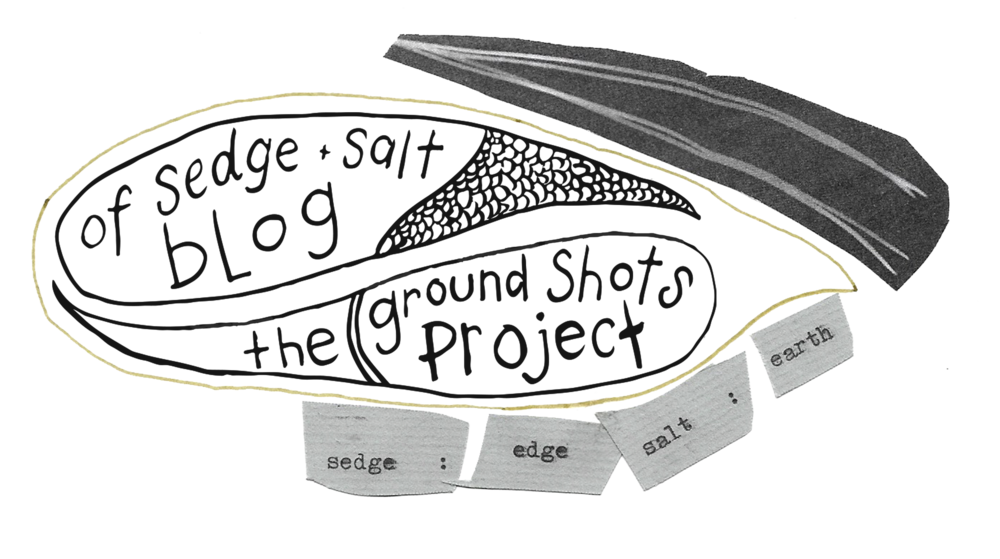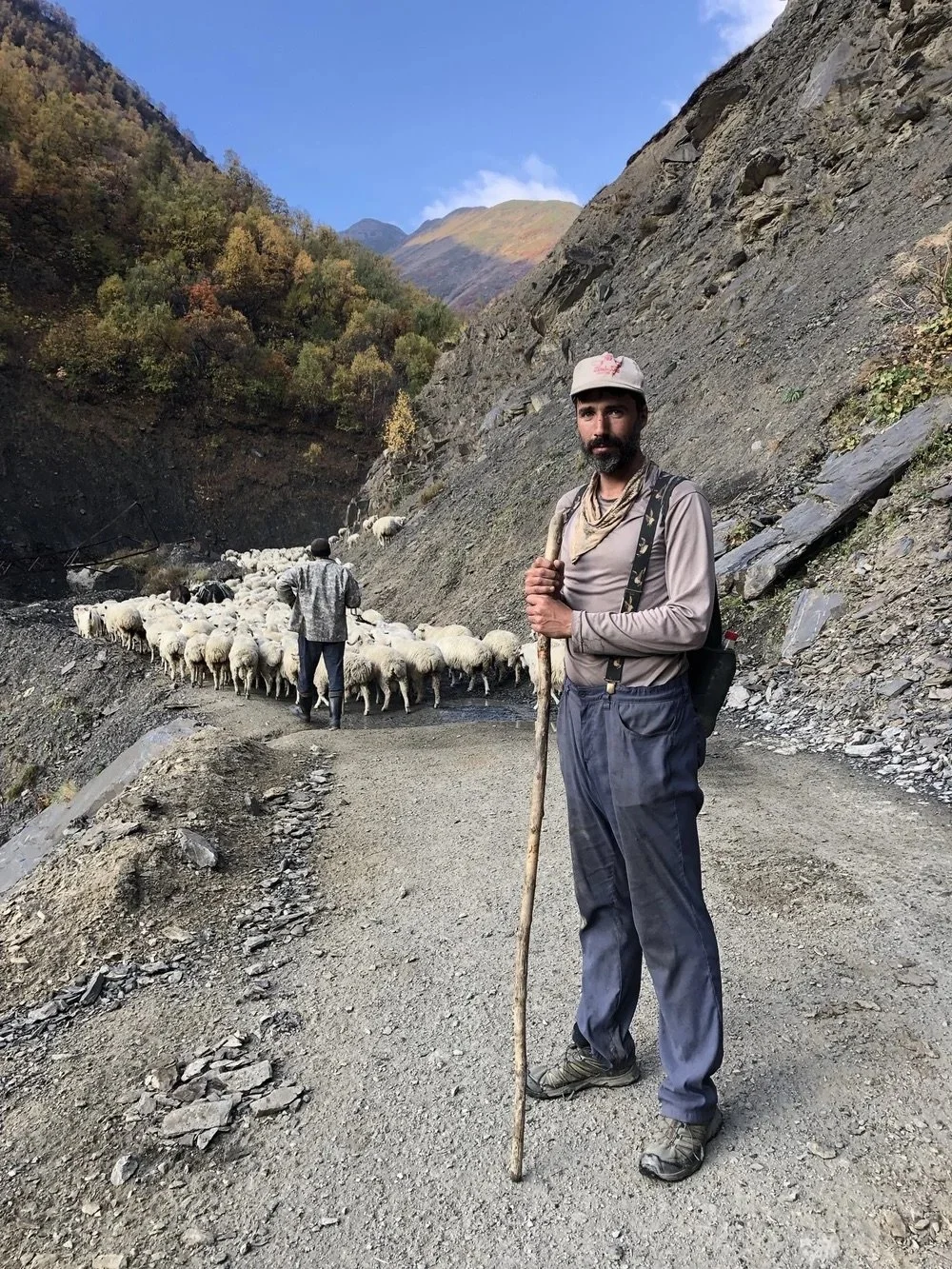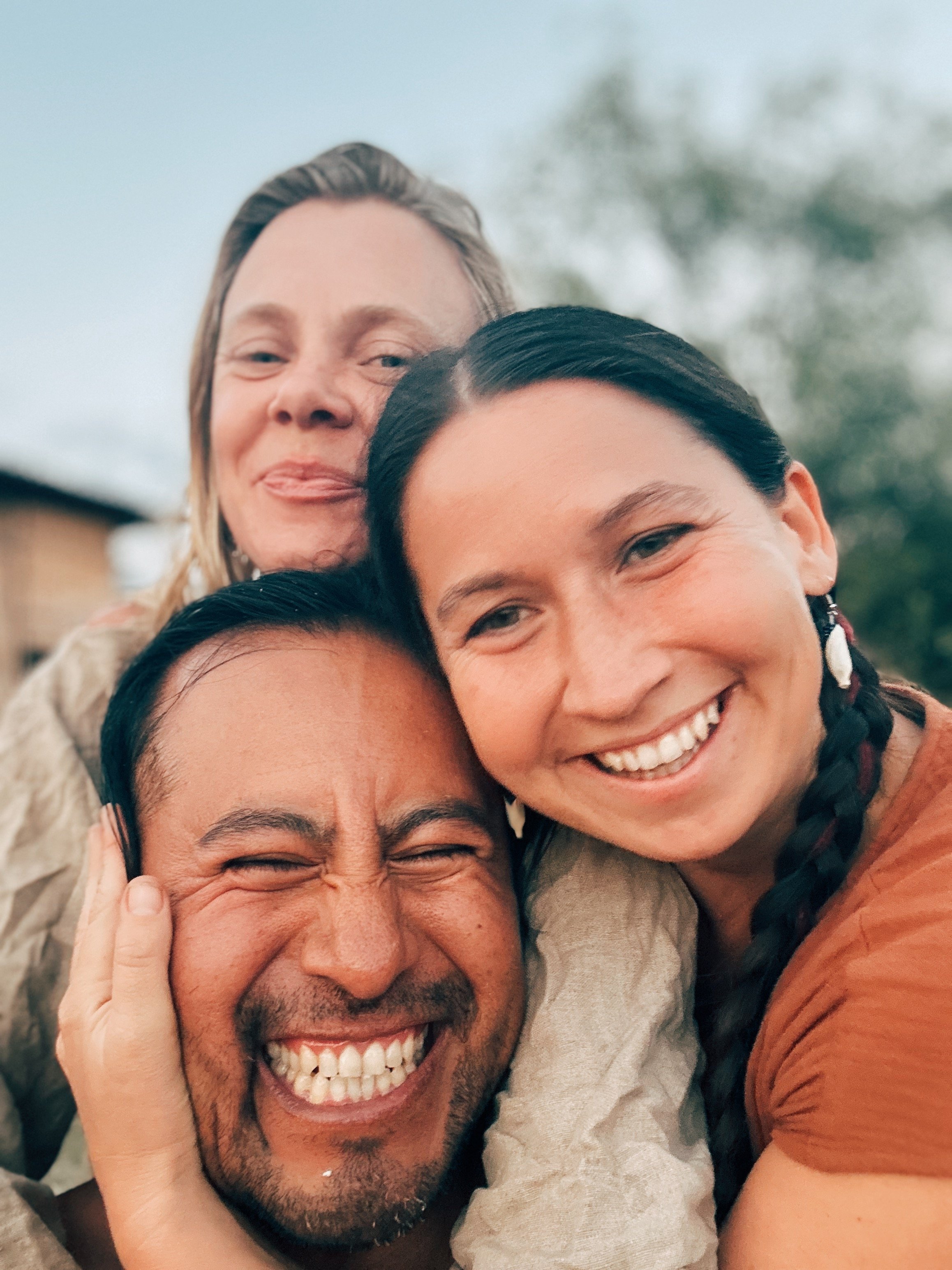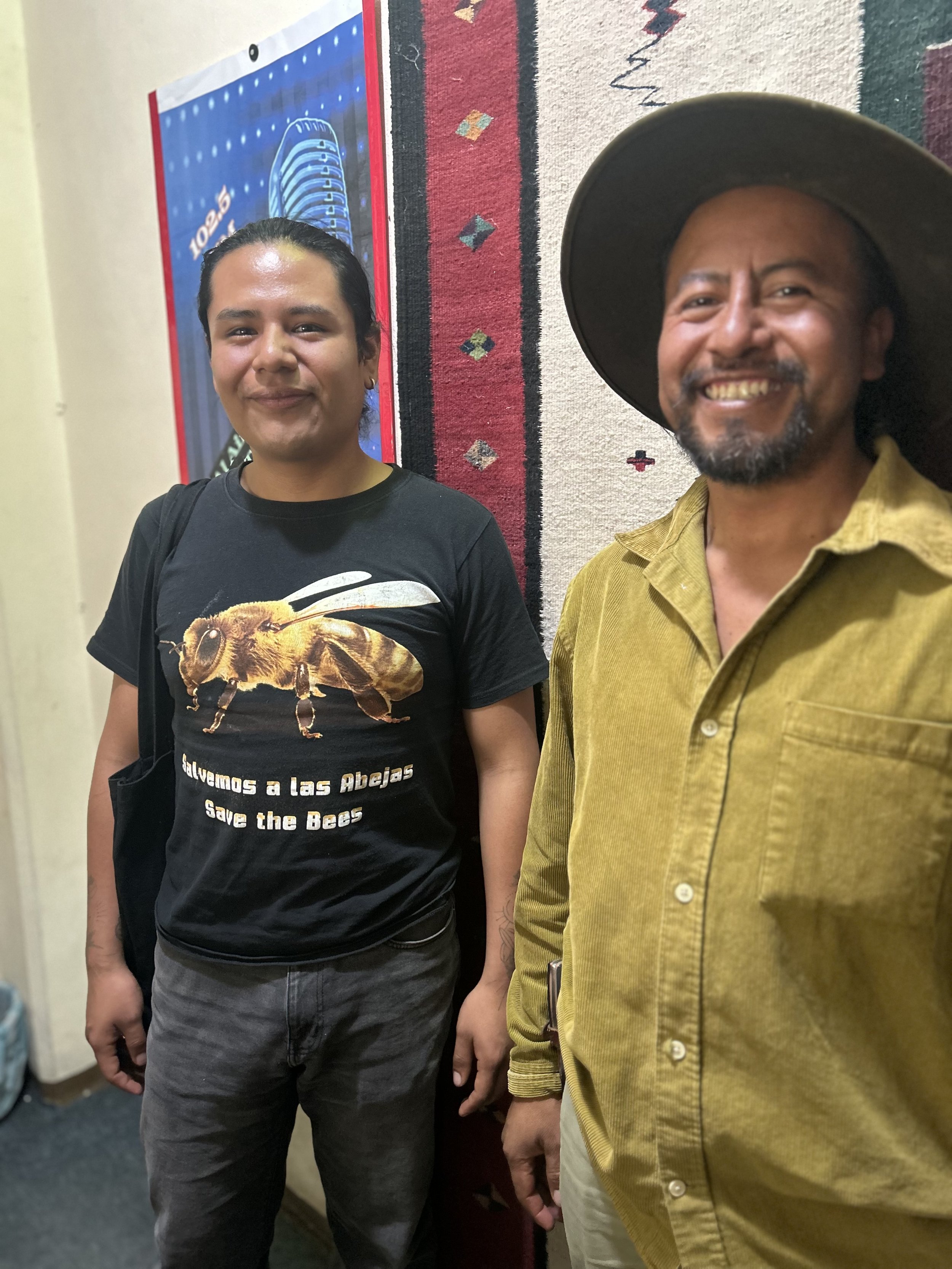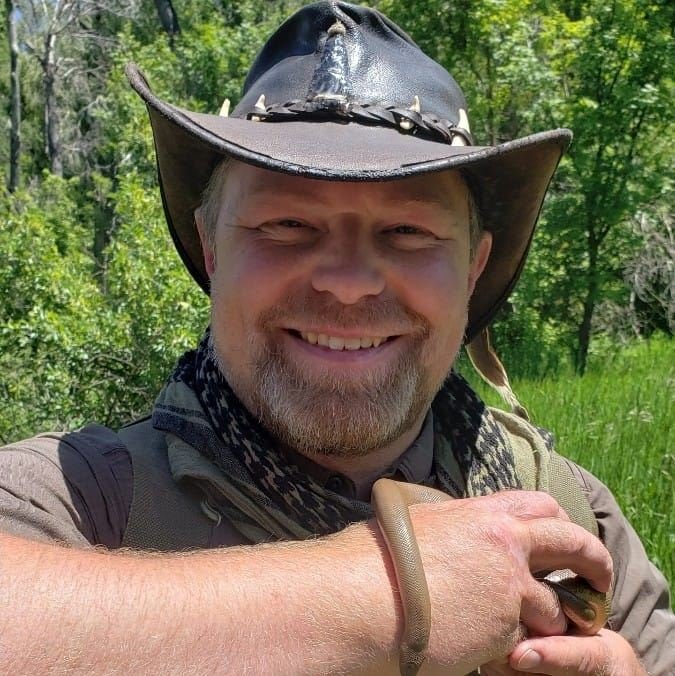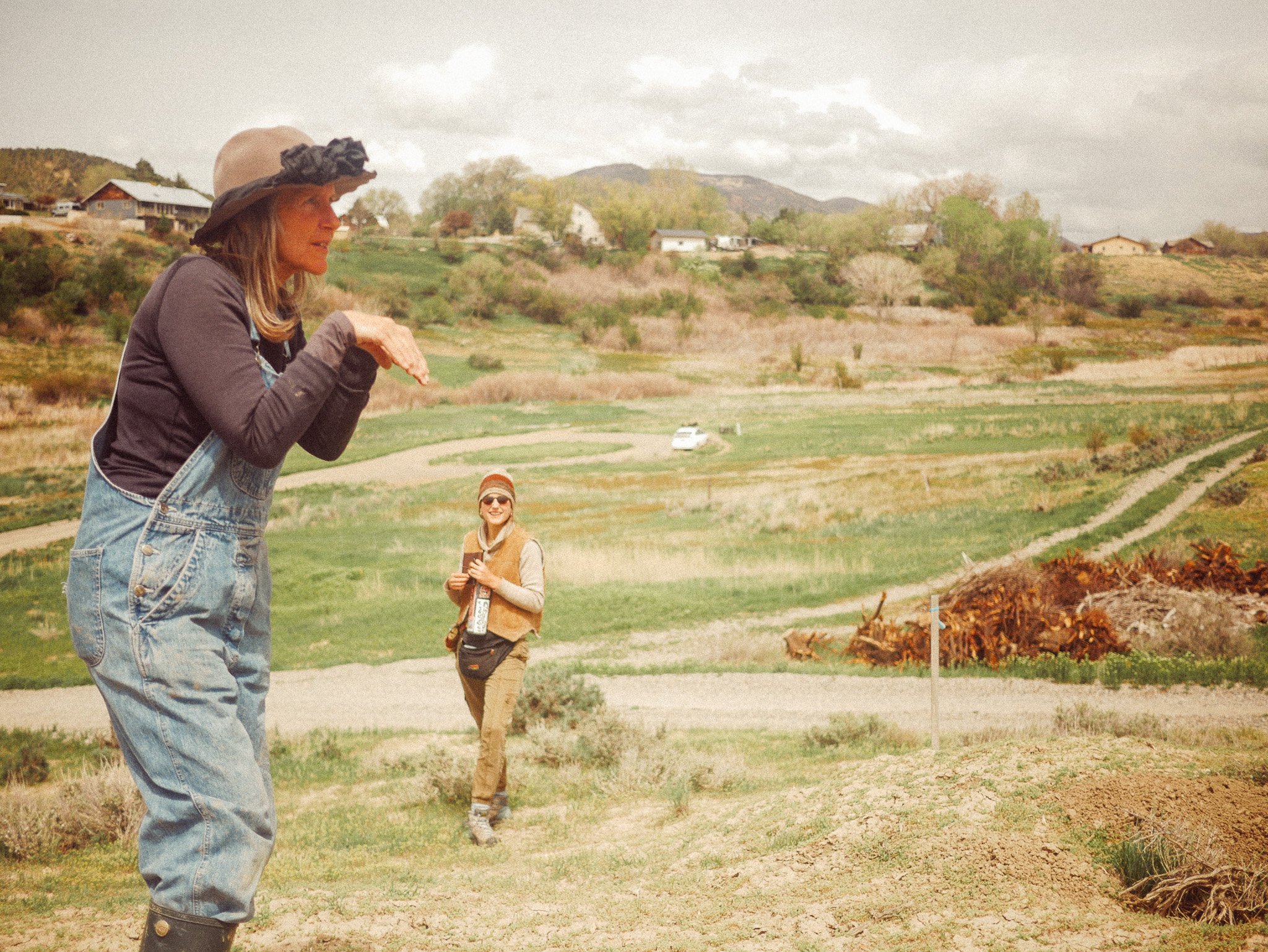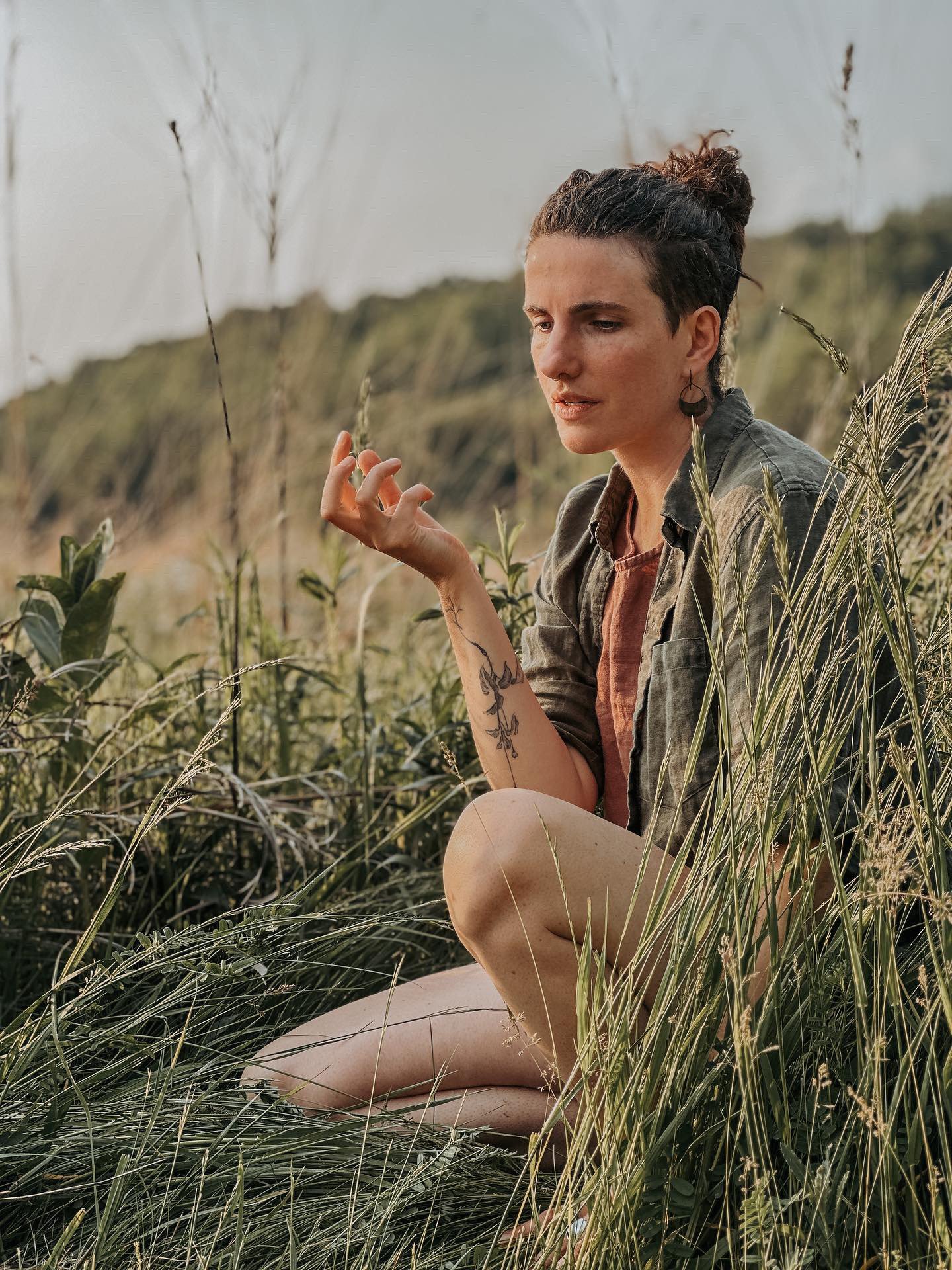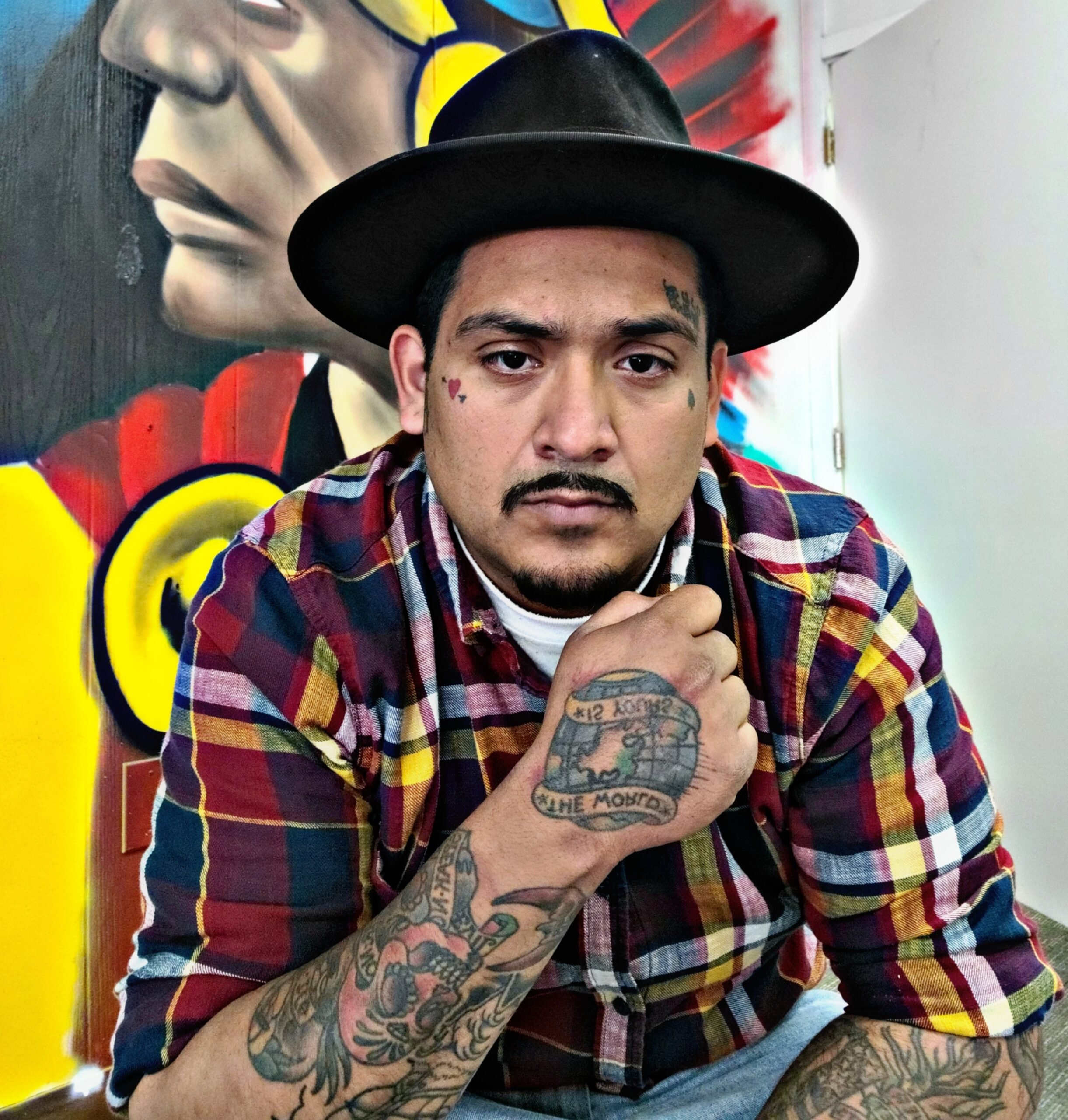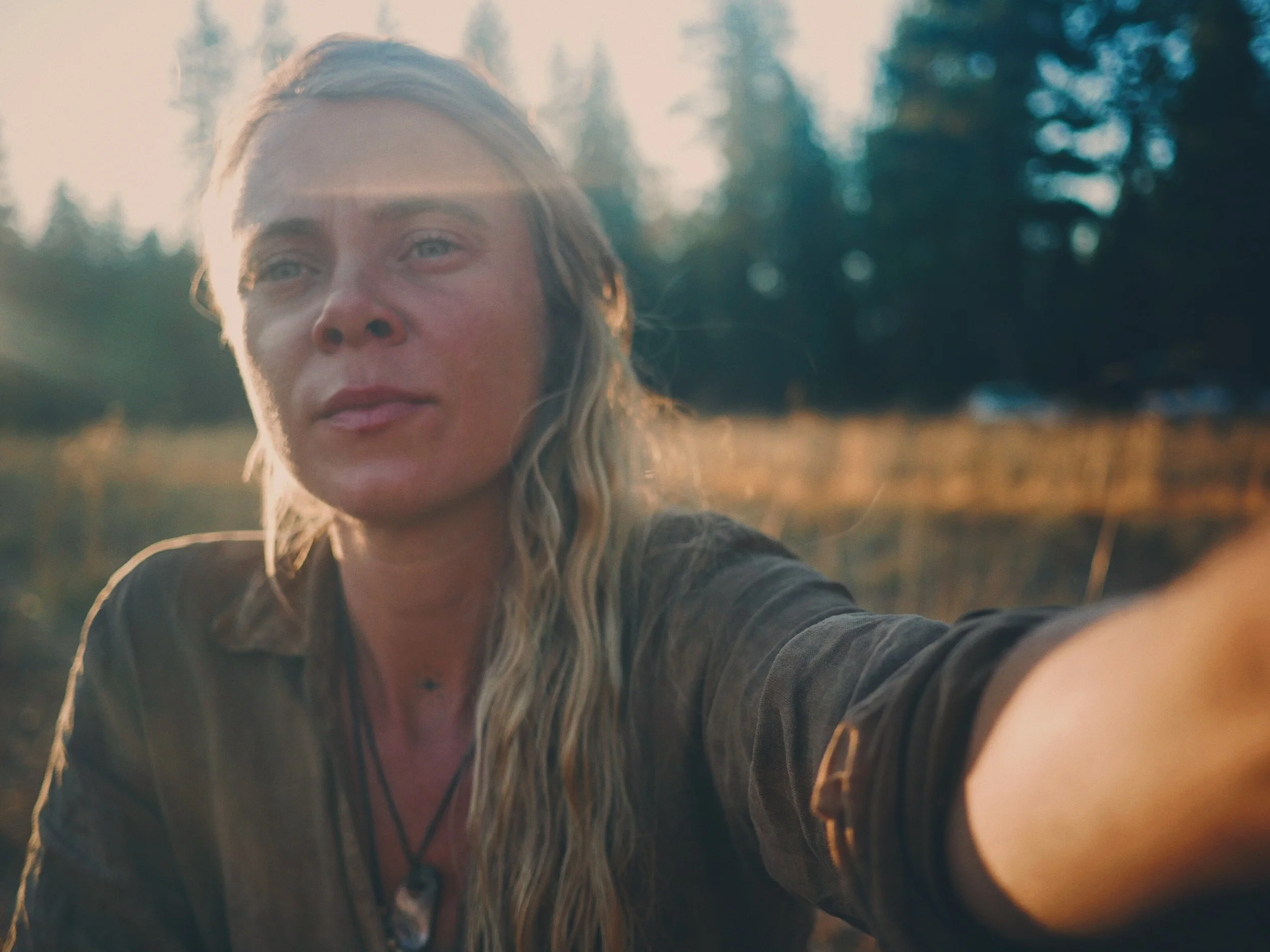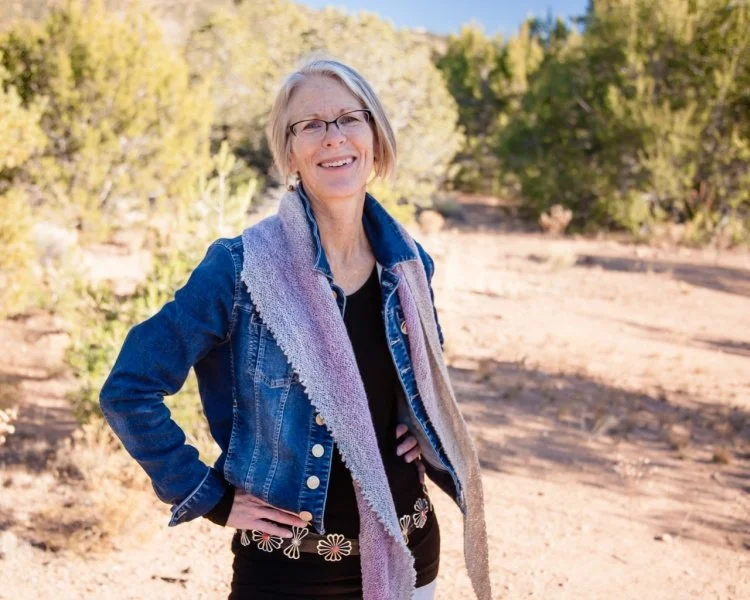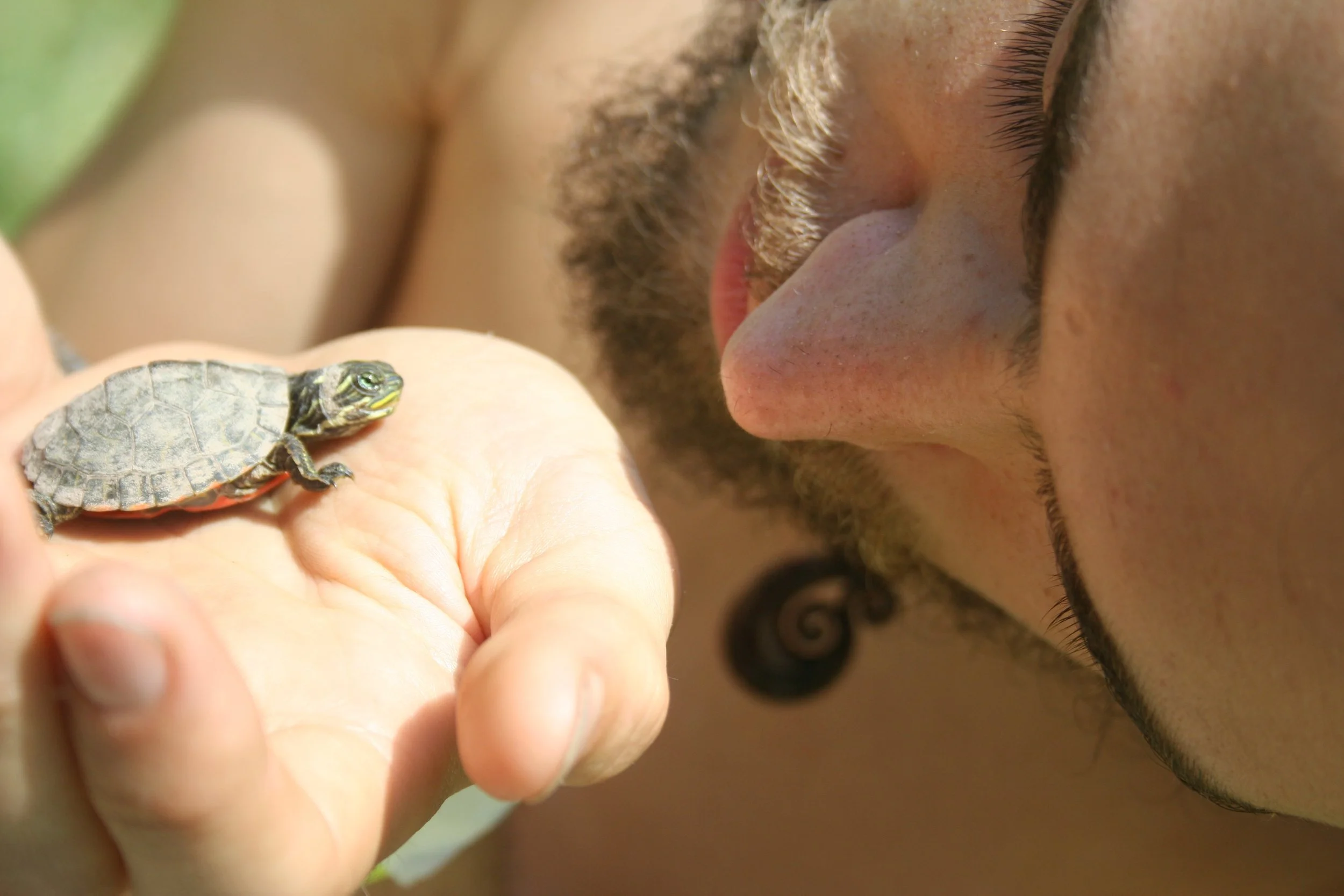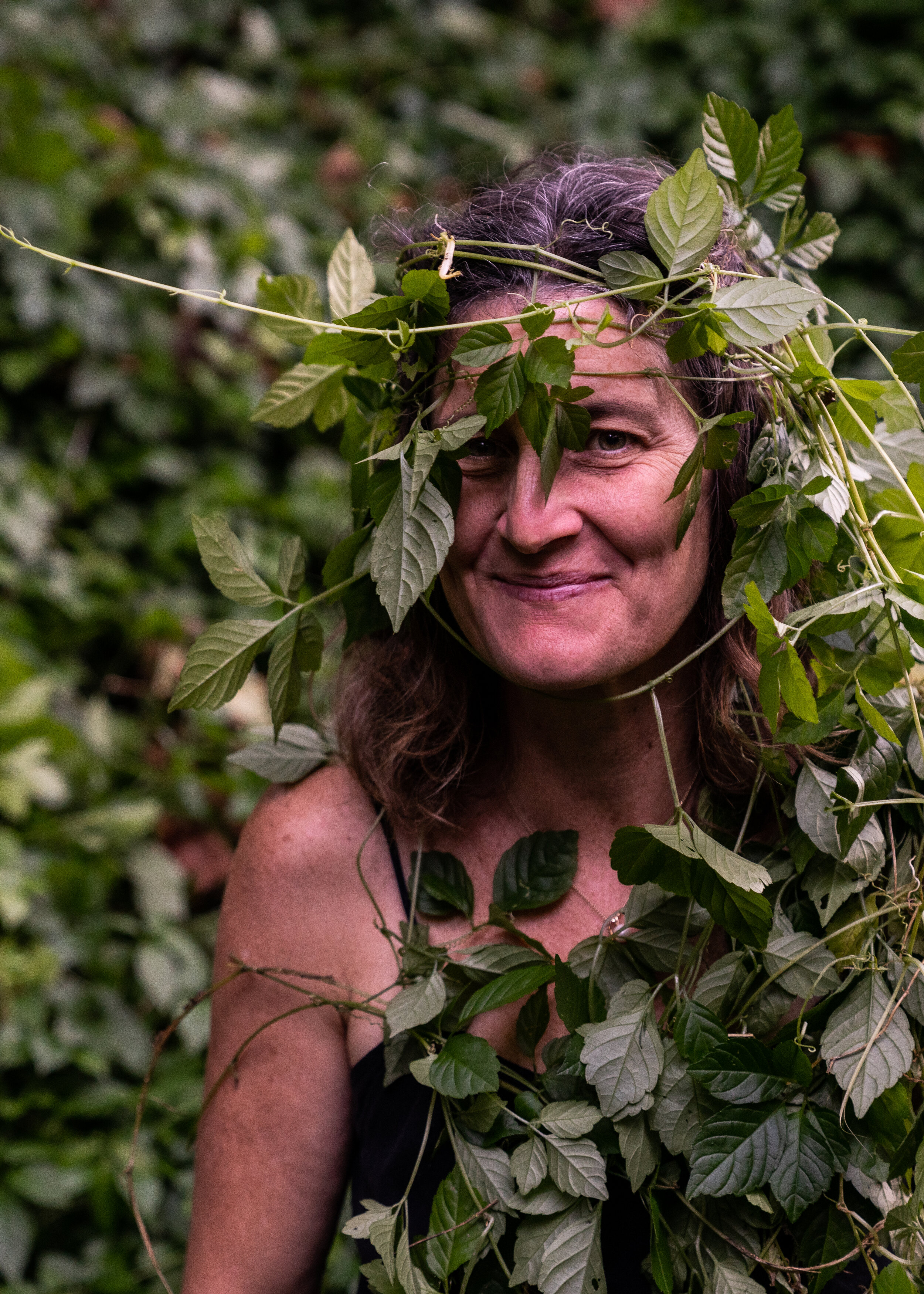This episode of the Ground Shots Podcast features a joint conversation with Paul Massey and Rob Cruz of the Kaua’i Food Forest.
The Kaua’i Food Forest is a community-based subtropical food ecosystem located on Kaua`i’s north shore in the ahupua`a (watershed) of Kalihiwai, a project born from the collaboration of three nonprofit organizations: Regenerations Botanical Garden, Mālama Kaua`i, and the Sanctuary of LUBOF. Regenerations is responsible for leading the ongoing design, planting, and maintenance of the forest.
According to the Kaua’i Food Forest website (which I suggest you peruse for plant lists, more photos and backstory of the project!):
[The Kaua’i Food Forest] is creating a constantly evolving, radiantly healthy forest ecosystem with nutritious delicious fruit and other food items as a major output. The forest is intended to serve as an educational demonstration site, where community members from Kaua`i and beyond can learn and innovate subtropical agroforestry techniques and management through practical hands-on experience. In addition, the forest is a renewable source of biological diversity for reproduction, distribution, and conservation.
Paul Massey is one of the founding stewards of the Kaua’i Food Forest, the director of Regenerations Botanical Garden, an organization whose mission is to support the conservation of threatened plant diversity for the benefit of all life by designing, building, and implementing inclusive and sustainable community-based stewardship activities. Paul hosts a radio show called ‘In the Garden, On the Farm’ on KKCR Kauaʻi Community Radio.
Rob Cruz is one of the founding stewards of the Kaua’i Food Forest, dedicates his life to creating and refining human scale food ecosystems and sharing with those willing to learn.
We recorded this conversation at the community house by the food forest one evening as dusk settled in on the island.
I spent a month on the island of Kaua’i, which is the first time I’ve left ‘Turtle Island’ in over ten years. I went to visit an old friend and camp on the farm she currently lives on, and came with an intention to be receptive to learning new plants. Coming to the island, it definitely felt like arriving on a different planet. Yet, some aspects of it were familiar because my dad and grandma, as horticulturists, propagated tropical plants in a special greenhouse at our family run nursery business in Virginia that was in operation from the 1960’s until a few years ago. My friend Sugi suggested I go volunteer at the Kaua’i Food Forest one of the first days I was on the island. I went, and I was immediately overjoyed at being around plant people, land tenders and a cared for garden that simulated a forest allowed to be both wild and directed at the same time. I would have camped under a Banana tree and worked there everyday if I could have.
Volunteering at this food forest during my time in Kaua’i, and ripe out of a permaculture training at the Occidental Arts and Ecology Center, I was reminded of what makes me feel the best. And really it makes sense. As humans, we are supposed to be tending the land for food, shelter, medicine, fiber, art. It’s what we have always done, all over the world. At the Kaua’i Food Forest, the project is tended with such intention and community in mind. It is collectively run, and even though Paul Massey is the humble mastermind behind it all— the project feels non-hierarchal. People from all walks of life show up to work on volunteer days, and through the shared process of planting, weeding, tending, and even eating lunch together utilizing the food forest plants - connections are made.
Working with the food forest reminded me that community and land tending are intricately intertwined, as is ecological and cultural health. When our hearts intertwine with one another in the shared process of work on the land- our connection to place that inevitably forms strengthens our drive to protect and advocate for it’s wellbeing. When we do this together, our connections and convictions feel strong and anything is possible.
I know this island has lots of problems, like the repercussions of colonization and private land ownership on Hawai’ian culture and the land— two things that are actually not traditionally separate. The loss of places for native food plants to thrive including the ones that were brought as canoe plants onto the islands by Polynesian folks is one of many drastic changes that has occurred since this intrusion by European settlers. Creating living seed banks to promote cultural and ecological resilience on the islands, increase food sovereignty, and promote diversity of life while also cultivating community around the work, just seems like the right thing to do in the midst of the all. And possibly, an important duty.
I just caught a glimpse of this place, got my hands dirty, and of course found it hard to leave especially since I made friends with humans, plants and the shore alike. It is true what was reiterated at my PDC: what the hands do, the heart follows. It’s certainly not a bad thing to have heart intwined in place- even if we are guests on the land. We can still love it through our work, and we must. In order to work towards rebalancing so much that has gone awry in our culture, projects like these working with our bodies together tending need to continue to grow in numbers.
Rob Cruz and Paul Massey at the Kaua’i Food Forest. May 2019.
In this conversation, we talk about:
the food forest as a community ran agroforestry project
various plants they are experimenting with at the food forest in their guilding design and grass replacement
a few nitrogen fixing trees and tending techniques
agroforestry in Hawai'i and on the island of Kaua'i specifically
're-culturing' and the educational component of the food forest
the concept of creating easy and accessible food culture
experimenting with crops that create abundance of food and ease of human maintenance and upkeep
the uniqueness of saving seed on an isolated island
the food forest as a living seed bank
the importance of seed saving
importance of preserving rare and endangered plants in their own ecosystems
canoe plants and the importance of vegetative propagation
the concept of being a 'guerrilla planter' who plants food everywhere, you don't need your own land
the influence of colonization on Hawai’ian land connection and Hawai’ian ecology
the future of the Kaua'i food forest
Photo diary of the Kaua’i Food Forest
This is a brief snapshot from a rainy workday one Saturday at the food forest May 2019.
'Awa / Kava, Piper methysticum, (Piperaceae)
Coleus, Plectranthus spp. (Lamiaceae)
Dendrobium sp. (Orchidaceae)
Freddie Mango Roots and his Korean Natural Farming ferments for the food forest. Interview with Freddie coming out next month.
kō / Sugar Cane, Saccharum officinarum, (Poaceae)
Bele, Lau Pele, Edible Hibiscus, probably Abelmoschus manihot (Malvaceae)
kī / ti, Cordyline fruticosa, (Agavaceae)
Pigeon Pea, Cajanus cajan (Fabaceae).
Māmaki / Nettle Tree, Pipturus albidus, (Urticaceae)
Rob
Sissoo spinach, Alternanthera sissoo (Amaranthaceae)
Pink Powderpuff, Calliandra haematocephala (Fabaceae)
Okinawan Spinach, Gynura bicolor (Asteraceae)
Begonia spp. (Begoniaceae)
Liliko'i Passiflora spp. (Passifloraceae)
Cacao, Theobroma cacao, (Malvaceae)
Comfrey, Symphytum × uplandicum (front), Sissoo spinach, Alternanthera sissoo (Amaranthaceae), other plants.
Marshall Paul
Rob
A guild with Coleus, Comfrey, Bush Basil, Māmaki tree. Mulched with bamboo and other plants to build soil and keep out chickens!
'Awa / Kava, Piper methysticum, (Piperaceae)
Gliricidia, Gliricidia sepium (Fabaceae)
Rollinia, Rollinia deliciosa, (Annonaceae)
Andy
Rob Cruz and Marshall Paul
Cacao, Theobroma cacao, (Malvaceae)
kī / ti, Cordyline fruticosa, (Agavaceae)
Māmaki / Nettle Tree, Pipturus albidus, (Urticaceae) bark
honeybee on a Bush/African Basil, Ocimum gratissimum, (Laminaceae)
folks working on a trellis made of bamboo
Coleus, Plectranthus spp. (Lamiaceae)
ʻOhiʻa ʻai, Mountain Apple, Syzygium malaccense, (Myrtaceae)
kī / ti, Cordyline fruticosa, (Agavaceae)
Kalo, Taro, Colocasia esculenta (Araceae)
Kalo, Taro, Colocasia esculenta (Araceae)
cutting down Banana, Musa spp. (Musaceae)for mulching guilds
Tamarillo, Solanum betaceum (Solanaceae)
Banana, Musa spp. (Musaceae)
Volunteers weeding to promote the growth of Perennial Peanut, Arachis glabrata, (Fabaceae) as a groundcover.
Stonebreaker, Phyllanthus niruri, (Phyllanthaceae)
mulching transplants with Banana leaves
Rob giving a tour of the food forest back in 2013 (it looks pretty different now!):
Links:
Cultivariable website mentioned on the podcast
Kaua’i Food Forest facebook page
Regenerations Botanical Garden
Kaua’i Food Forest’s website: http://www.kauaifoodforest.org
Paul's radio show: ‘In the Garden, On the Farm’ found at http://kkcr.org/
Rob on Instagram: @rob_cruz
View the Kaua’i Food Forest hashtag: #kauaifoodforest
Support the podcast on Patreon to contribute to our grassroots self-funding of this project.
Our Instagram page @goldenberries
Join the Ground Shots Podcast Facebook Group to discuss the episodes
Subscribe to our newsletter for updates on the Ground Shots Project
Theme music: 'Sweat and Splinters' by Mother Marrow
Additional Music: JaSoFuChi by Trevor Thorpe. Find his music at: https://hawksviewstudio.bandcamp.com
Produced by: Opia Creative
